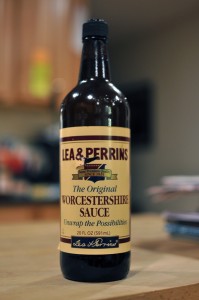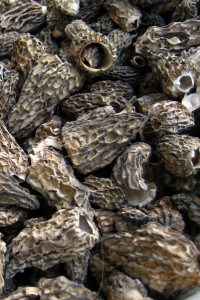Wikipedia lists at least 58 distinct umami enhancers. We’ve got at least half of them on hand, and a line on the rest. If you’re looking for the cliff notes on how to boost flavor in any situation, look no further.
Red Boat Products
Not all fish sauce is created equal. The folks at Red Boat wanted to make a high-quality fish sauce, so they set about finding the best anchovy for the job–ca com, or the black anchovy, wild-caught off of the island of Phu Quoc, Vietnam. They pack them with sea salt, within a day of catching them, and age them in the traditional way: slow fermentation in mango wood barrels, for a year. The fish is pressed, the liquid is drawn off, and the fish sauce is ready to bottle. The 40 N on the label indicates the amount of nitrogen per liter of fish sauce, and that indicates protein levels. This is significant to Red Boat, because they believe the best fish sauces have a designation of 30N or higher.
BLiS is a collaboration between the folks at BLiS and Red Boat, offering a bourbon-barrel aged version of their fish sauce, in a 200ml bottle. This sauce, more meant for finishing a dish or directly dressing raw fish, rather than mixed into a sauce, is a bit smoky, and has hints of bourbon-like sweetness, with vanilla, wood and orange peel undertones. See also Colatura for other ideas on how you can use this higher-end, more concentrated and more complex fish sauce.
Red Boat’s latest offering–a very cool new product–is their fish salt. These are the salt crystals that form on the bottom of the mango-wood barrels in which the fish sauce is aged. Here, umami meets salt, and using this salt to season fish (directly, or via brine) is one natural use. What are yours? We’d love to know, so tag us on Twitter or on Instagram with your fish salt innovations.
We’re all made of fish sauce
 Worcestershire sauce, made in Britain since 1837, contains white vinegar ( in America–in Britain, it contains malt vinegar instead), molasses, sugar, salt, anchovies, tamarind, onion, garlic, and good ol’ “natural flavorings,” which likely include clove, lemon, pickles, and peppers. This fish sauce, brought to you by colonialism, has cousins all over the globe.
Worcestershire sauce, made in Britain since 1837, contains white vinegar ( in America–in Britain, it contains malt vinegar instead), molasses, sugar, salt, anchovies, tamarind, onion, garlic, and good ol’ “natural flavorings,” which likely include clove, lemon, pickles, and peppers. This fish sauce, brought to you by colonialism, has cousins all over the globe.
Here are a few:
Japanese worcestershire sauce, also known as tonkatsu sauce, incorporates dried fruits such as apples and tomatoes. Tonkatsu has a lot in common, then, with A1, HP Sauce, Heinz 57, Branston, and the whole class of British “brown sauces.” So next time you run out of tonkatsu, grab the HP. See also “Joe Beef Gentlemen’s Sauce” mainly because it’s awesome.
You’ve probably heard of kecap manis, or Indonesian sweet soy sauce. In Indonesia, they worcestershire call it “kecap ingriss,” meaning “English sauce.” The Indonesian word “kecap” is where we get our word ketchup, which used to be a catch-all word referring to fermented sauces.
In fact, ketchup used to be made from almost anything but tomatoes–oysters, mussels, mushrooms, soy, and walnuts were a few popular bases. The original meaning of “kecap” meant “the brine of pickled fish.” The tomato didn’t become a popular ketchup ingredient until the 19th century, thanks in part to the Heinz company. Old-school tomato ketchup used to be a thin liquid. It’s current thickness is a result of more tomatoes (that’s what the “fancy” on the label refers to–higher tomato content) as well riper tomatoes that contain more pectin, and last but not least, xanthan gum–which is what allows the Heinz gang to get the exact thickness they want and seem to think is appealing.
Garum (see also, liquamen) was the fish sauce of ancient Greece and Rome. Today Colatura, made in the fishing village of Cetara, on the Amalfi coast, is made from fish packed with sea salt and fermented in chestnut wood barrels. It is the modern version of garum that lives on in the cuisine of Southern Italy. Check out BLiS bourbon-barrel aged fish sauce as an alternative, by way of Vietnam, by way of the American south, for a finishing fish sauce that’s a true original.
- Anchovy: salted white, oil-packed brown, or oil-packed white boquerones
- Bacon: Nueske, Niman Ranch
- Beets: red, candy, gold, large and baby
- Bottarga: salted, cured tuna roe for shaving
- Capers: regular or wild salted
- Douchi: aka fermented black beans–whole fermented soybeans before they are made into sauce. Rustic, earthy, salty and briny, classically paired with clams or beef
- Edamame, aka soybeans, frozen: in or out of shell
- Fish Sauce: Red Boat, Blis Bourbon-Barrel Aged, 3 Crabs
- Fish Salt: Red Boat, see above for details
- Garlic, Black: peeled and unpeeled fermented garlic, which takes on a sweet quality not unlike roasted garlic, but with a lot more funk
- Gochujang: Korean chili paste made from fermented soybeans, gochugaru (korean chili flake), glutinous rice, and salt this kicks the ass of sriracha in terms of adding more than just heat to something.
- Guanciale, La Quercia
- Ham, Dry-Cured: Redondo jamon serrano, Fermin Iberico ham, La Quercia prosciutto & speck
- Lardo, La Quercia
- Katsuobushi: dried, smoked and fermented bonito flakes, a key ingredient in dashi
- Kimchi: korean fermented pickled vegetables
- Kombu: a variety of dried seaweed, and a key ingredient in dashi
- Miso: soybeans fermented with koji and either rice, barley or wheat, in paste form: red (aka), white (shiro), or yellow (awase, meaning “mixed” miso)
- MSG: monosodium glutamate, in powder form, derived from corn
- Mushrooms, Dried: esp shiitake, porcini, porcini powder
- Mushrooms, Fresh: esp honshimeji, enoki, king oyster, shiitake
- Nori: dried seaweed sheets to wrap sushi or toast and use as a condiment (such as furikake), to garnish ramen, etc.
- Pancetta, La Quercia
- Parmesan Reggiano (and other umami-rich hard cheeses…i.e;aged gouda pradera, vella dry jack, grana padano)
- Roquefort (plus an extensive collection of local blues)
- Sausage: Chinese, Fra Mani, Olympic
- Scallops, Dried: one of the main components in XO sauce, the dried ham of the fish world
- Shrimp, Dried: not only a feature of Asian cuisine~also found in Creole, African, Indian, Mexican and Brazilian dishes
- Shrimp, Paste (also crab) the backbone of many, many Southeast Asian and Southern Chinese dishes, made from dried fermented shrimp and salt, pressed into a block
- Soy Sauce: aged shoyu (artisanal), shiro (white), kikkoman, kecap manis, and many others
- Sweet Potatoes
- Tomatoes: fresh, paste, roasted oil-packed, San Marzano, Sundried
- Worcestershire Sauce: see below
- XO Sauce: regular and extra hot. This dried seafood sauce, which originated in Hong Kong, is made from dried scallop, dried shrimp, red chili, Jinhua ham, and garlic.
Not a sauce nor paste
 Shiitakes, Porcinis, Morels, Black Trumpets, or a mix of them all are available by the pound. Steeped in hot water and turned into a broth with a little miso, added to chicken or vegetable stock to enhance, powdered and rubbed into steaks, roasted chicken, scallops,or tossed into a braise–anywhere else you want to turn up the volume on savory. These should be a pantry staple. Dried porcini powder is also available.
Shiitakes, Porcinis, Morels, Black Trumpets, or a mix of them all are available by the pound. Steeped in hot water and turned into a broth with a little miso, added to chicken or vegetable stock to enhance, powdered and rubbed into steaks, roasted chicken, scallops,or tossed into a braise–anywhere else you want to turn up the volume on savory. These should be a pantry staple. Dried porcini powder is also available.
Parmesan cheese has one of the highest glutamate levels naturally occurring in any food. Beyond all the cool things you can do with parmesan itself, the rind is an effective flavor enhancer, and a good candidate for tossing into tomato sauce, stocks, heck, y’all can even toss ’em into ramen broth. You can also grill the (non-waxy) rinds until they’re melty, and slather it on bread for a midnight chef snack.